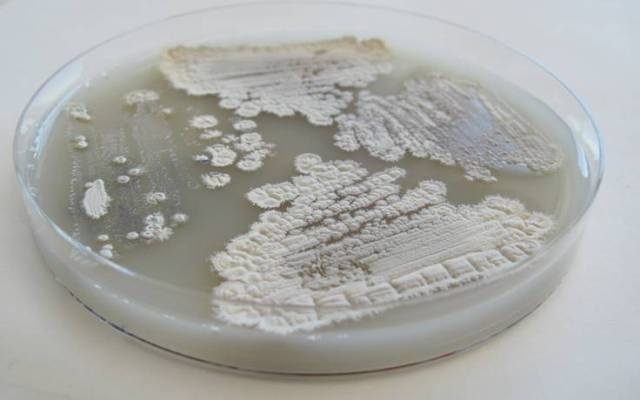Jun 10 2016
Very few valuable things are vital to life as death if we are composed of carbon. A dead tree is a representation of the downfall of the building blocks required for producing new flora and fauna as well as the energy to maintain them.
 Counter to long-held belief about the bacteria Streptomyces, seen growing here in a petri dish, the ability to break down a stubborn molecule in plant cell walls called cellulose may be limited to just a few gifted strains. (Courtesy- Adam Book/Uw-Madison)
Counter to long-held belief about the bacteria Streptomyces, seen growing here in a petri dish, the ability to break down a stubborn molecule in plant cell walls called cellulose may be limited to just a few gifted strains. (Courtesy- Adam Book/Uw-Madison)
“The recycling of plant carbon is fundamental to the function of our ecosystems,” explains Cameron Currie, Professor of bacteriology, University of Wisconsin–Madison. “We get food, water, air, energy — almost everything — through those ecosystem services. It’s how our planet operates.”
However, in the first place, the dead tree parts were meticulously structured and do not fall apart for recycling.
A group of unique microorganisms handles the meticulous deconstruction of cellulose, which is an important structural constituent of plant cell walls and an organic compound that is abundantly available on land. Fungi growing on decomposing plants as well as bacteria in animals’ guts, in the soil, and working together with insects, also do the job just as well.
A new research carried out on a specific group of bacteria known as Streptomyces shows how certain bacterial strains developed improved abilities to breakdown cellulose. This research also highlights more effective methods by which we could imitate those capabilities to generate fuel from unused plant material.
Streptomyces were initially considered to be mainly responsible for the breakdown of cellulose, and to be active in the cause across countless number of bacterial strains.
That assumption — which is based on a very good, old study of one type of Streptomyces — is not right on the mark. What we see now is that there’s a relatively small group of types of Streptomyces that is far more effective at breaking down cellulose, and a much larger group that is far less effective.
Brian Fox, Professor of biochemistry in UW–Madison and co-author of the paper published in the PLOS Biology journal
The relative abilities of over 200 kinds of Streptomyces bacteria were measured by UW–Madison scientists who grew them on simple sugar and filter paper, which is a good source of cellulose. The team collected the genomes of over 120 strains were then collected and eventually discovered the genes and the ways major gene are expressed - which differentiated strong cellulose degraders from poor ones.
“The strains that aren’t good at degrading cellulose mostly express the same genes whether we grow them on glucose or on plant material,” explains Gina Lewin, a bacteriology graduate student and co-author of the study. “The strains that are really good at degrading cellulose totally change their gene expression when we grow them on plant material.”
The thriving Streptomyces strains typically found living in communities along with insects, increased the production of some enzymes, which are proteins that cleave and dissolve and pick cellulose apart.
“There are families — six or eight or maybe 10 of these enzymes — that all of the active Streptomyces have,” says Fox. “And this paper shows that the most abundant one of them has to be there or the whole thing collapses.”
These specific enzyme combinations make the research beneficial to researchers focused on biofuels.
Usually, biofuels are produced from the sugars extracted from the edible parts of the plant. “We eat the kernels off the corn cob,” says Currie. “But most of the energy in that corn plant is in the part which is not digestible to us. It’s not in the cob. It’s in the green parts, like the stalk and the leaves.”
Streptomyces and other evolving microorganisms have been honing the way they exploit parts of the plants almost as long as the latter themselves have been growing on the land i.e. many millions of years ago. The Streptomyces study was sponsored by the Department of Energy’s UW–Madison-based Great Lakes Bioenergy Research Center, which was established in 2007.
The natural world is responding to the same kind of things that humans are. We need to get food. We need to get energy. And different types of organisms are achieving their needs in different ways. It’s worth looking at how they do it.
Fox
The key enzymes and new groups of enzymes, which are formed when Streptomyces flex specific genes, were identified by this study. The action of the microorganisms would turn out to be a great boon for bioenergy production if they improve over present industrial processes.
For a cellulosic biofuel plant, enzymes are one of the most expensive parts of making biofuels. So, if you can identify enzymes that work even just slightly better, that could mean a difference of millions of dollars in costs and cheaper energy.
Lewin